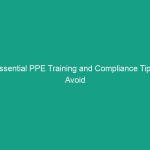Good Morning Team!
Today, we’re diving into a crucial topic that affects all of us: Must-Know Tips for Driving in Construction Zones: Reduced Speeds & Awareness. Understanding how to navigate construction zones safely is essential not only for our Safety but for the well-being of everyone on the job site. With numerous Hazards present in these areas, it’s vital to remain vigilant and informed.
Understanding Must-Know Tips for Driving in Construction Zones
Driving in construction zones can be challenging due to altered traffic patterns, reduced speeds, and numerous distractions. The primary focus of our discussion today is the importance of maintaining reduced speeds and heightened awareness while navigating these areas. Ignoring these tips can lead to accidents, injuries, and even fatalities. Knowing how to drive safely in construction zones helps protect you and your fellow workers.
Key Hazards, Risks, and Safety Considerations
Construction zones are rife with potential hazards. Here are some specific risks you should be aware of:
- Reduced Visibility: Heavy machinery, road signs, and workers can obstruct your line of sight.
- Variable Road Conditions: Uneven surfaces, debris, and changes in road layout can pose significant challenges.
- Increased Pedestrian Traffic: Workers may be moving in and out of traffic, increasing the risk of accidents.
- Signage Confusion: Temporary signs may not be as clear as permanent ones, leading to misunderstandings.
Ignoring safety protocols in construction zones can result in real-world consequences such as vehicle damage, personal injury, or even loss of life. It’s essential to recognize these risks and take proactive steps to mitigate them.
Best Practices, Procedures, & Actionable Advice
Here are some actionable tips for safely driving in construction zones:
- Adhere to Posted Speed Limits: Always follow the reduced speed limits indicated by signs. Remember, these limits are in place to protect everyone in the area.
- Stay Alert: Avoid distractions such as mobile devices. Keep your eyes on the road and be ready to react to changes.
- Use Turn Signals: Indicate your intentions clearly to avoid confusion for other drivers and workers.
- Maintain Safe Following Distances: Give yourself enough space to react to sudden stops or obstacles.
- Be Prepared for the Unexpected: Construction zones can change rapidly. Stay vigilant for workers, machinery, and other vehicles.
For instance, consider a scenario where a construction worker suddenly steps into the road to direct traffic. If you’re speeding or distracted, you may not have enough time to react. This highlights the importance of reduced speeds and awareness.
Regulations, Standards, and Compliance
It’s important to comply with Regulations put forth by organizations such as OSHA to ensure safety in construction zones. These regulations include:
- Use of appropriate warning signs and barriers to alert drivers.
- Training for workers on Safe Practices when working near traffic.
- Regular inspections of construction sites to ensure compliance with safety Standards.
Compliance with these standards is not just about following the law; it’s about protecting yourself and your colleagues. Violations can lead to serious consequences, including accidents and legal repercussions.
Employee Engagement & Discussion
Now, let’s take a moment to engage in a discussion. Think about your experiences in construction zones:
- What safety challenges have you encountered while driving through construction areas?
- How do you feel about the signage and traffic Control Measures in these zones?
- What steps do you take to ensure your safety and the safety of others?
Your insights are valuable, and sharing them can help us all improve our safety practices.
Conclusion & Key Takeaways
In conclusion, driving in construction zones requires a heightened level of awareness and adherence to safety protocols. Remember these key points:
- Always follow reduced speed limits.
- Stay alert and avoid distractions.
- Use signals and maintain safe distances.
- Be prepared for sudden changes and unexpected obstacles.
- Comply with safety regulations and standards.
Your commitment to these practices is essential for ensuring a safe work Environment. Thank you for your attention and for prioritizing safety in our workplace. Together, we can make our construction zones safer for everyone!


